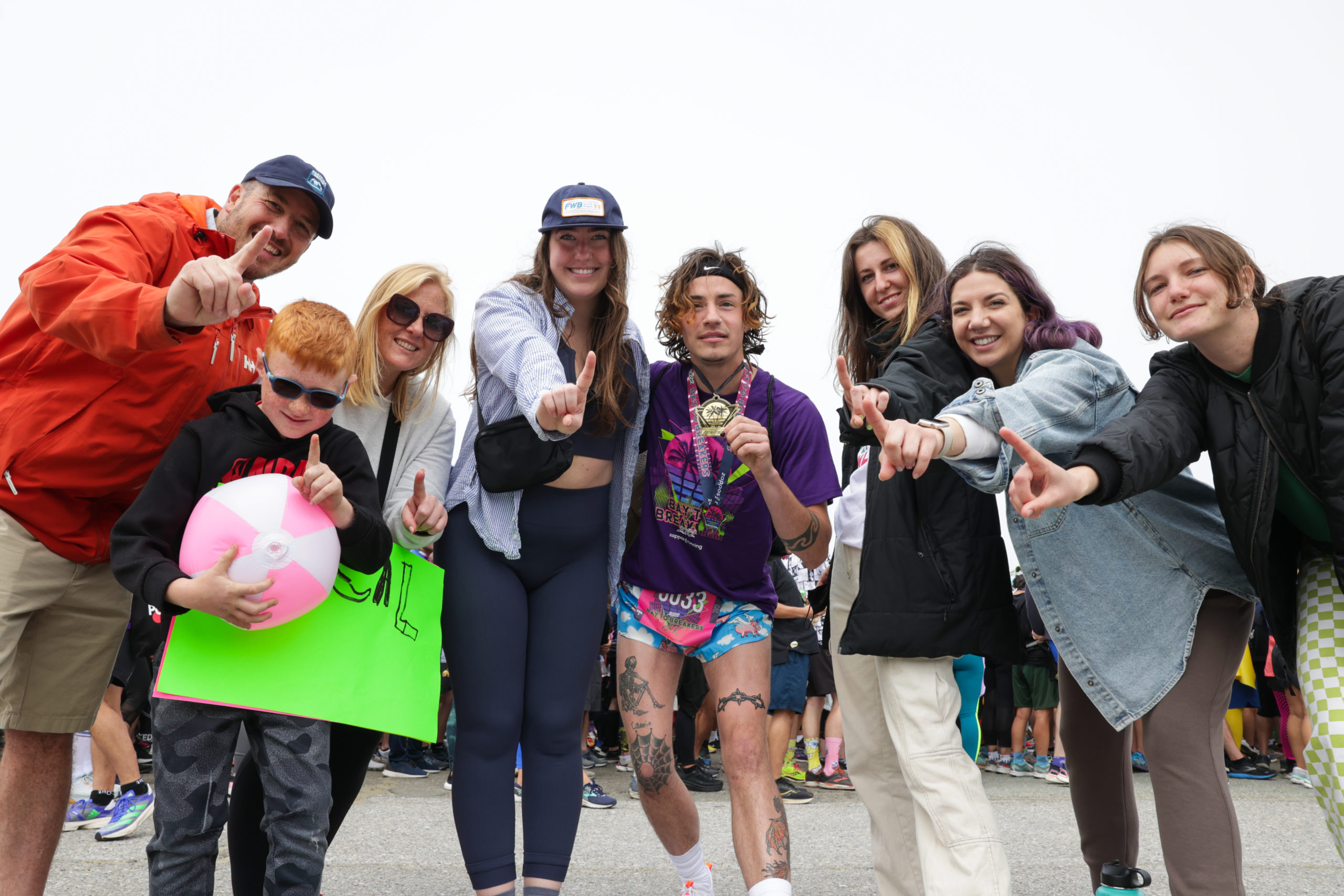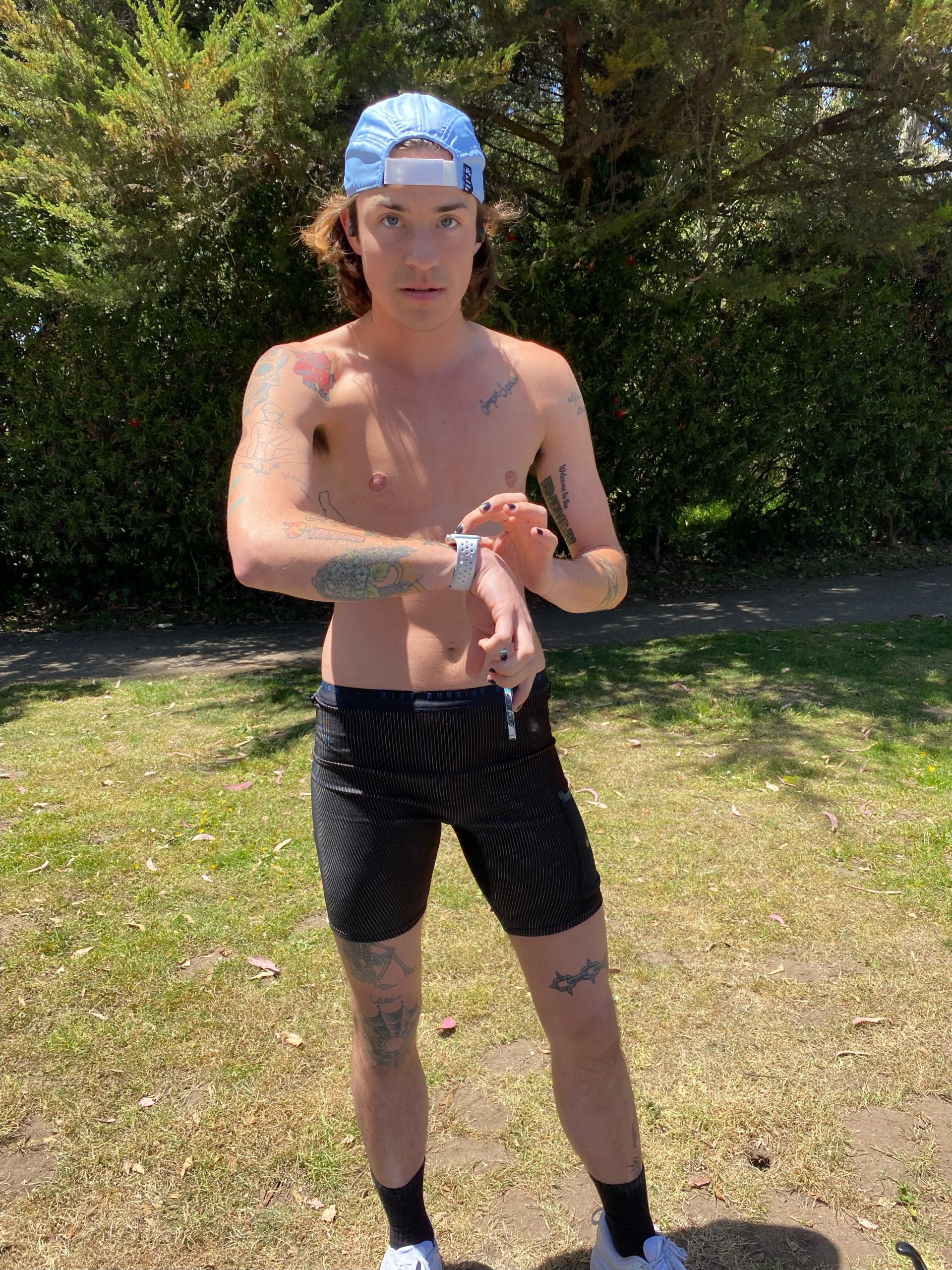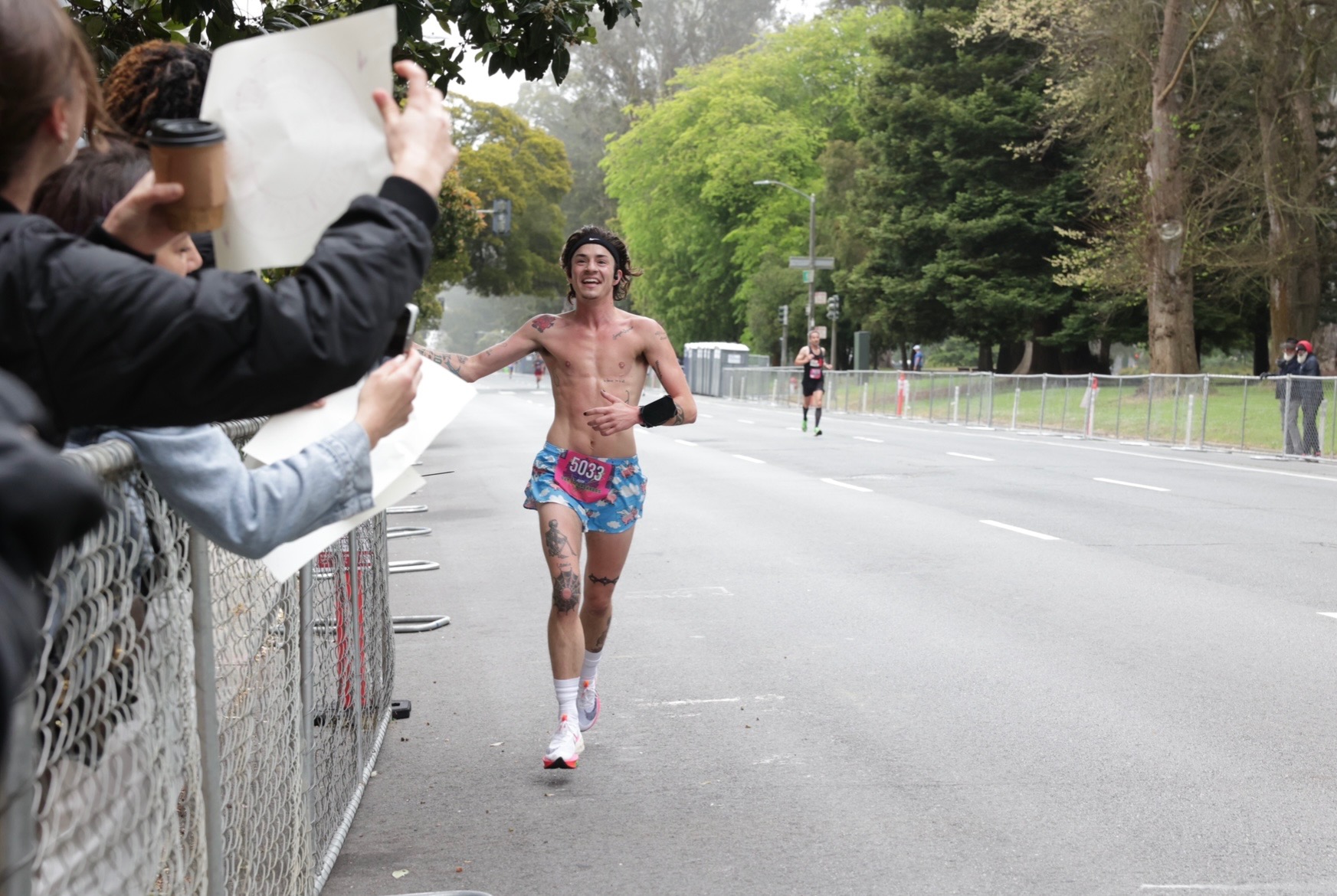A Gender-Expansive Runners Story: Cal Calamia
“Just Run if You Want to Run:” How Cal Calamia Fights for Inclusivity
There’s a saying: a jack of all trades is a master of none. What most people don’t know is that there’s a second half to that saying that completely changes its meaning: a jack of all trades is a master of none but oftentimes better than a master of one.” San Francisco’s Cal Calamia, one of our gender-expansive runners, is a great example of this full-version jack.
Calamia is a runner, a poet, a social justice advocate, a non-profit co-founder and owner, a public high school Health and Spanish teacher, and, as of recently, a Janji athlete. This might sound like a lot even to them, which is why they took another stab at their introduction.
“Wind it back; I’m Cal Calamia… I’m a lot of things, but among all these, I think what I am most is a connector.” Here is their Gender-Expansive Runners Story…
How Running Found Calamia

Cal Calamia didn’t find running; running found them. It found them at lunchtime in sixth grade in the form of a few older kids who were recruiting cross-country runners. Calamia and their best friend didn’t know much about running but decided to try it anyway.
“And then I was lapping people in our two-mile races,” Calamia said. Given that they also “absolutely loved sprinting through the woods,” it’s possible it has been decided right then and there that running would claim Calamia as one of its own.
Calamia kept running in high school and through university. The distance didn’t matter; from one-mile sprints to long marathon efforts, Calamia never wanted to stop. When they moved to San Francisco, they realized one thing; “that I am a runner through and through,” they said.
What does it feel like when you run? Where does your mind go?
My mind, for once, goes to the present moment when I run. I definitely think when I’m running, but I think from this place of distance, where I know that there’s no action to be taken. As you heard in my intro, I’m a super busy person, so this time dedicated to moving my body one leg at a time is absolutely precious to me. It also allows me to feel connected with and proud of my body and my strength.
However much Calamia loves running, there was a time in their past when that simply wasn’t enough. In high school, intense iron deficiency caused them lightheadedness and fatigue, which isn’t very conducive to running.
“[I] was feeling confused and defeated until I got on the right supplements,” Calamia said.
In college, their running career was, once again, in jeopardy. A stress fracture in their femur came first, physical and mental challenges caused by an “unhealthy culture around weight and eating at the college level” was next.
What more, “not knowing what category to register under [was] its own beast,” as Calamia said. It was enough to dissuade them from taking part in what they loved the most—running.
“It’s hard to feel that you belong somewhere where you are explicitly told you don’t,” Calamia said.
It eventually got better. Calamia moved to San Francisco and got to a “really healthy place with running.” Things were looking up and they were about to run the Boston Marathon when, during a soccer game, they tore their ACL. The following surgery put Calamia out of commission for seven months.
Calamia got close to being fully recovered from that injury only this spring and is now back to training and dreaming of big races. “There are still days or weeks where I have to take it easy,” Calamia said, so they’re running a half marathon at this year’s San Francisco Marathon.
However, after the race, they’re all in. If everything goes well, there are two big races on Calamia’s calendar for the following year; the Chicago Marathon in October and the Boston Marathon next year.
Building Bridges for Gender-Expansive Runners
Belonging plays an important part in running for Calamia and many others. The running community is often described as and believed to be an open and welcoming place, however, how true is that for people who aren’t a part of the majority? This is where Calamia’s role as a connector between worlds comes into play.
Why is the running community an important place for inclusivity?
Why wouldn’t it be? Running is one of the most generous places. Every single road race since middle school cross country that I have ever seen has or nearly has brought me to tears—the way that people cheer the same for the first person and the last person. Why not cheer the same for everyone else in between? In some ways, I just wonder why gender is even a part of this conversation. But since it is, let’s talk about all genders instead of just two.
To connect the running and LGBTQIA+ communities and create a more inclusive space for everyone, Calamia partners up with races and other events and organizations, offering gender inclusivity consultations.
“Most people are not maliciously trying to exclude people from running, but they are not doing the legwork required to actively include us,” Calamia said. “We internalize what we see in the world: ideas about gender and beauty and so forth. For trans and non-binary people, we often begin to internalize the lack of ourselves in the world, and that is incredibly harmful.”
This erasure played a major part during Calamia’s adolescence. Because they didn’t see any gender-expansive runners, it didn’t appear they could have a future in running. Because trans folks were either pushed into the background by society or chose to hide themselves because of lack of acceptance, Calamia didn’t believe it was even possible to transition.
“I could never have fathomed that I could participate in the sport I love the most with recognition and acknowledgement from the community,” they said.
Even today, Calamia is often “incredulous in response to myself and what I have been able to do, because it’s so rare to see in the world.” One of the easiest and most important things communities can do is to simply recognize the existence of all of their members.
“So we can move past the question of whether or not trans and non-binary people exist,” Calamia said, “and toward the truth, which is that, oh, we do!”
The running community is no different; after all, inclusion often starts where people from all walks of life can meet, and the running community is one of those places. Running is for everyone—and Calamia is working hard to ensure that.
Even though they “don’t represent every single gender-expansive person,” Calamia took it on themselves to “do the legwork” and knows they’re making change happen for many in the community by simply showing the world who they are. Being their true self helps people outside and inside the running communities see that people like them exist, which, in turn, “can begin to humanize non-binary+ folks.” This is important for gender-expansive runners.
“And [a] part of humanization is acknowledgment, which begins with one more option on the [race] registration drop-down,” Calamia said.
In this way, their inclusivity work is “less of an abstraction and more of a conversation with a real person who understands, at least from one perspective, what needs to change.” And change is, indeed inevitable; non gender-conforming people have always existed and always will, that won’t be any different. What needs to change is how communities treat all of their members, LGBTQIA+ folks included. Why not start with adding another option at race registration?
“This is not a new thing,” Calamia said. “We’ve been here all along. Many trans people spend their whole lives just trying to survive and this is what it looks like to ask for more than survival.”
Calamia still has a long way to go and many goals to reach. However, they know exactly what success looks like to them: “more gender-expansive folks running.”
“The more space we are given, the more positive change we will make—whether in the form of an increasingly large and competitive field of non-binary+ runners, a more empathetic community, or one more parent deciding to love and support their gender-expansive child,” they said.
Being from the Bay Area, what does it mean to you to see a local race embrace inclusivity?

Just being here and having this conversation with folks from the SF Marathon team means the world to me. It reminds me of why I came here, transitioned, and fork over rent every month. It’s the spirit of San Francisco to welcome change and value its people. With so much divisiveness and disparities across the country and even in the city, those glimmers of the existence of the true spirit of San Francisco mean even more. And people look toward the city as a pioneer for social change, so what we do here matters a lot. Thank you, SF Marathon.
Cal Calamia & 2H4H (No, We’re Not Talking About Chemistry)
Fighting bodily dysphoria with hoodies is a common practice. However, as many who have lived in and around the Bay Area can attest, it’s just too hot for hoodies most of the year. Or is it 2 Hot 4 Hoodies? See what Calamia did there?
Calamia’s non-profit, 2 Hot 4 Hoodies, supports gender-expansive youth by providing chest binders for those who can’t afford them and helping new gender expansive runners in the SF Area. Though it may seem simple, providing chest binders can have a great impact on the lives of trans, non-binary, and other gender non-conforming people.
“[It] alleviates body dysphoria and builds a life-saving sense of community for trans and non-binary+ youth,” said Calamia.
This effort is focused mainly on Bay Area residents and BIPOC folks, however, 2H4H ships “hundreds of chest binders all over the world.” To fund this effort, Calamia and the team, whose labor is “entirely unpaid” for now, sell merch. Still, 2H4H relies mostly on donations, both monetary and those of used and unused chest binders.
Calamia and the 2H4H team are looking to expand in the future and hope to “[serve] as an educational resource for all sorts of communities through workshops and peer support, with the holistic health of gender-expansive young people at the center of all of the work we do,” Calamia said.
Calamia can be found on their website, Instagram, and in their book, San Franshitshow. Donation options for 2H4H and their merch are accessible on the website and through Instagram.
Craving more? Read our profile of Jonathan Sockolosky, a scientist who’s running for moms and changing the game for ovarian cancer patients.


